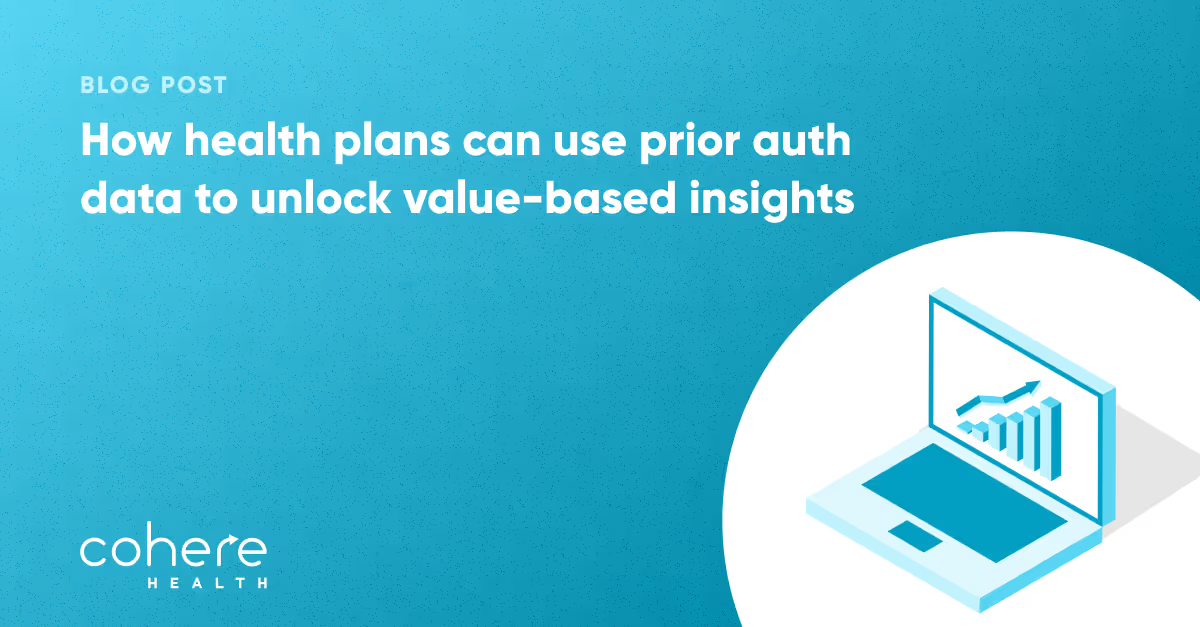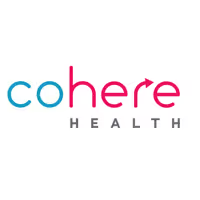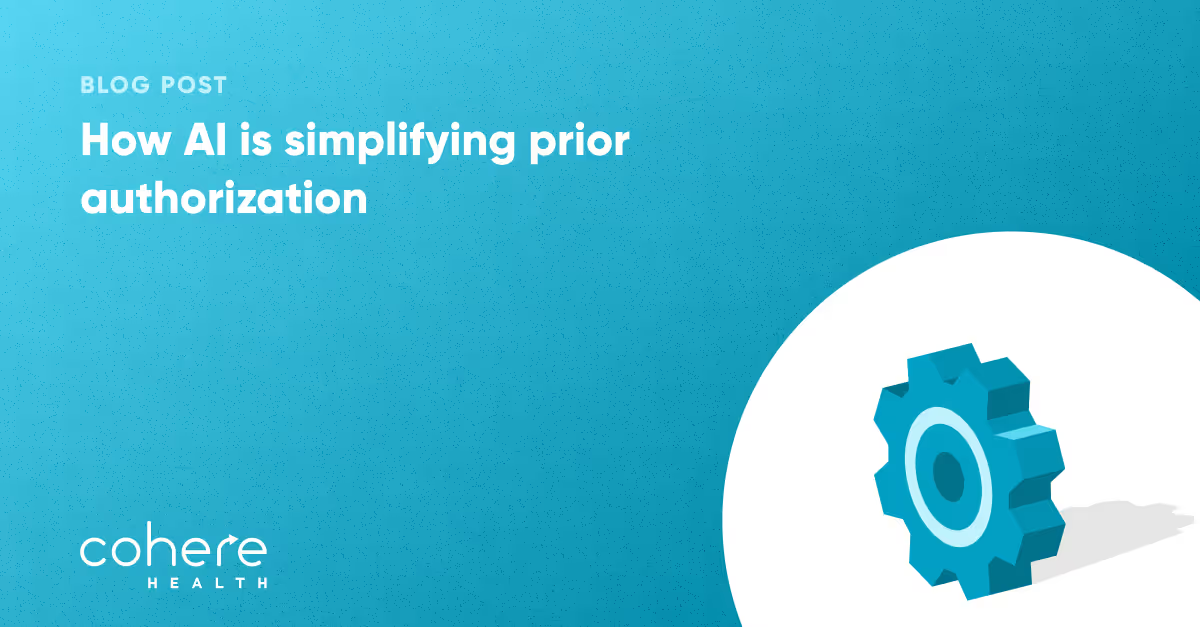How health plans can use prior auth data to unlock value-based insights
Published:
July 3, 2025

Health plans are sitting on a valuable but underleveraged asset: prior authorization (PA) data. Every request for care generates a clinical snapshot, which includes the reason for the request, supporting documentation, and a medical necessity review—all of which reflect real-time decisions made in care delivery.
While traditionally viewed as an administrative burden, PA data holds the potential to become a strategic input for value-based care. By applying modern healthcare analytics to this information stream, plans can surface patterns, address variation, and empower providers to deliver higher-value care.
Prior authorization data reveals treatment appropriateness trends
Most health plans lack a scalable method for assessing whether the services they approve through prior authorization (PA) are appropriate for the patient’s clinical scenario. Claims data is retrospective and limited, and provider attestations are subjective. This leaves a blind spot in understanding the real-world clinical decisions that occur upstream in the care journey.
PA data, however, captures rich contextual information: the patient’s diagnosis, recent imaging, labs, prior therapies tried, and the provider’s rationale for the service. By aggregating and analyzing this data, plans can start to answer key questions: Are providers consistently requesting evidence-based services? Where do we see deviations from clinical pathways? Are some specialties over-requesting specific procedures?
With these insights, health plans can move beyond utilization management to clinical quality management, educating providers, reducing unnecessary interventions, and ensuring the proper care is delivered at the right time.
Unlocking healthcare analytics to benchmark provider performance
Traditional provider performance measurement relies heavily on lagging indicators, such as claims, often arriving weeks or months after care is delivered. That delay makes it hard to proactively support providers who may be struggling or recognize those who are excelling.
By contrast, PA data offers a near-real-time look into how providers document and justify care decisions. When integrated into an analytics framework, this data reveals a provider’s adherence to clinical guidelines, documentation completeness, and decision-making patterns that claims alone can’t show.
This real-time visibility enables health plans to benchmark performance meaningfully, identify outliers sooner, and target resources more effectively. It also builds the foundation for performance-based contracting by introducing more immediate, clinically relevant metrics that can be tied to incentive structures in value-based care models.
Surfacing hidden care variation and gaps in utilization
Underuse, overuse, and misaligned care aren’t always visible in traditional reporting but have significant consequences. Unwarranted care variation contributes to poorer outcomes, exacerbates health disparities, and increases medical spending. Yet many health plans struggle to pinpoint where these gaps exist or why they persist.
That’s where granular PA data comes in. Because it reflects real-time clinical intent—what a provider believes a patient needs and why—it offers an upstream view into where care may be going off track.
For example, if one region consistently requests advanced imaging for low-risk patients without first trying conservative management, that’s a flag for variation. If orthopedic specialists in one network consistently under-request physical therapy, that could signal underuse. These insights can help plans develop targeted clinical interventions, promote consistency in care delivery, and advance equity by ensuring patients across geographies and demographics receive appropriate treatment.
Turning prior auth into a strategic advantage
Prior authorization doesn’t have to be a static, back-office task—it can be a dynamic source of insight for better care delivery.
Health plans can transform reactive processes into proactive strategies by applying healthcare analytics to prior authorization data. From identifying inappropriate care trends to optimizing provider performance and enhancing contract outcomes, PA data offers a powerful lever for change.
Discover how Cohere enables leading payers to unlock clinical intelligence from prior authorization workflows.
Available For Download
Stay ahead with expert insights on transforming utilization management and payment integrity—delivered straight to your inbox.


